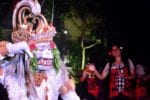Last Updated on 15 January 2025 by Cycloscope
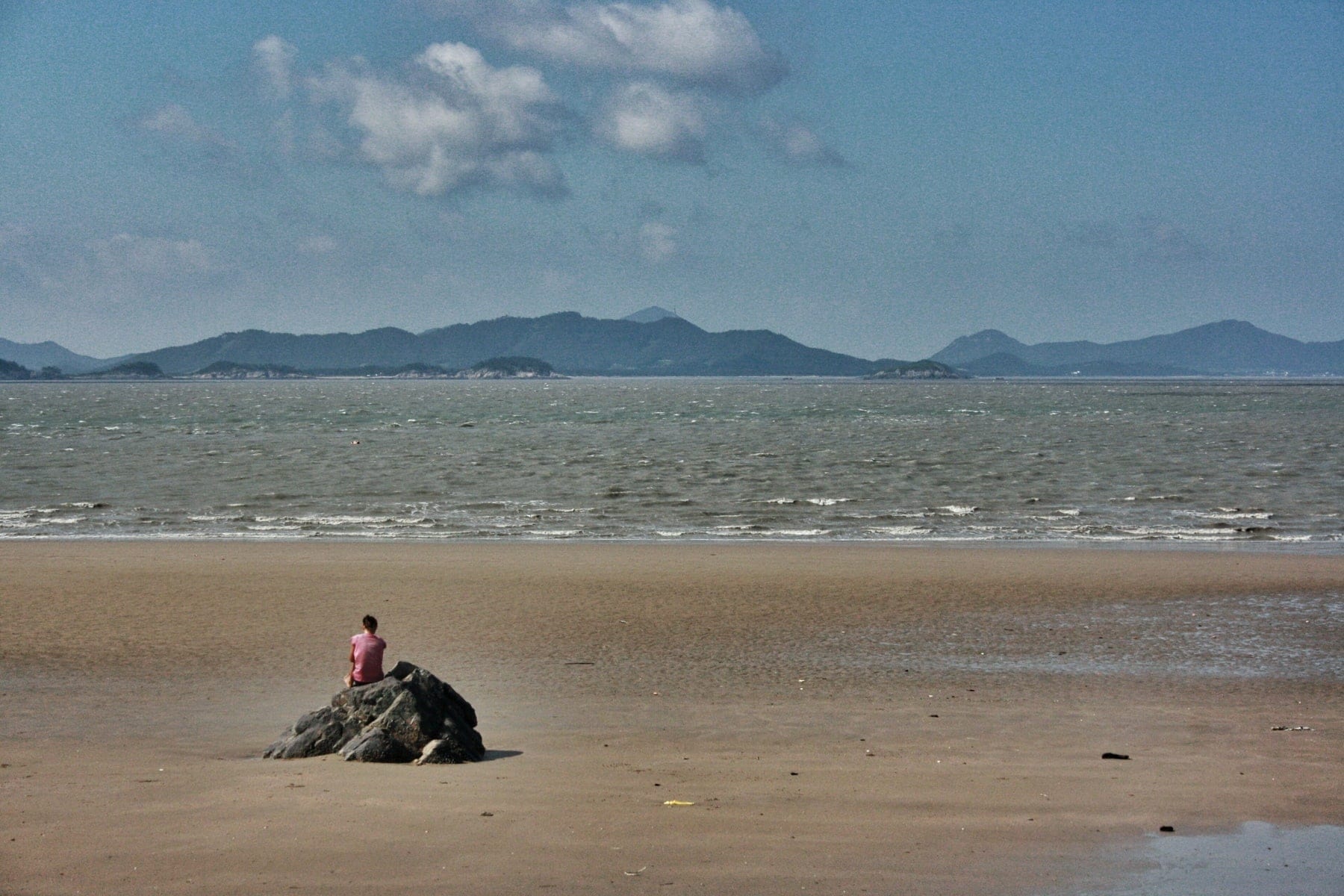
Sangnagwol-ri/Hanakwol-ri, the best off-the-beaten-path islands of South Korea’s west coast
South Korea is a country of islands, with over 3,300 scattered across its coastlines, mostly along the west and south. While some of these islands, like Jeju, are well-known and often flooded with tourists, many remain blissfully untouched by the mainstream travel crowds. As avid off-the-beaten-path travelers, we sought out the islands that don’t make the typical tourist lists—places where we could experience the real local life, away from the crowds.
During our two-month bicycle trip across South Korea, we visited 20 different islands. Some were connected by bridges, others by ferries, and none of them were particularly famous. However, two islands will forever hold a special place in our hearts: Sangnagwol-ri and Hanagwol-ri. Not only were they remote and peaceful, but they also offered experiences that we’ll always remember.
Random ferry hopping – a new way to travel
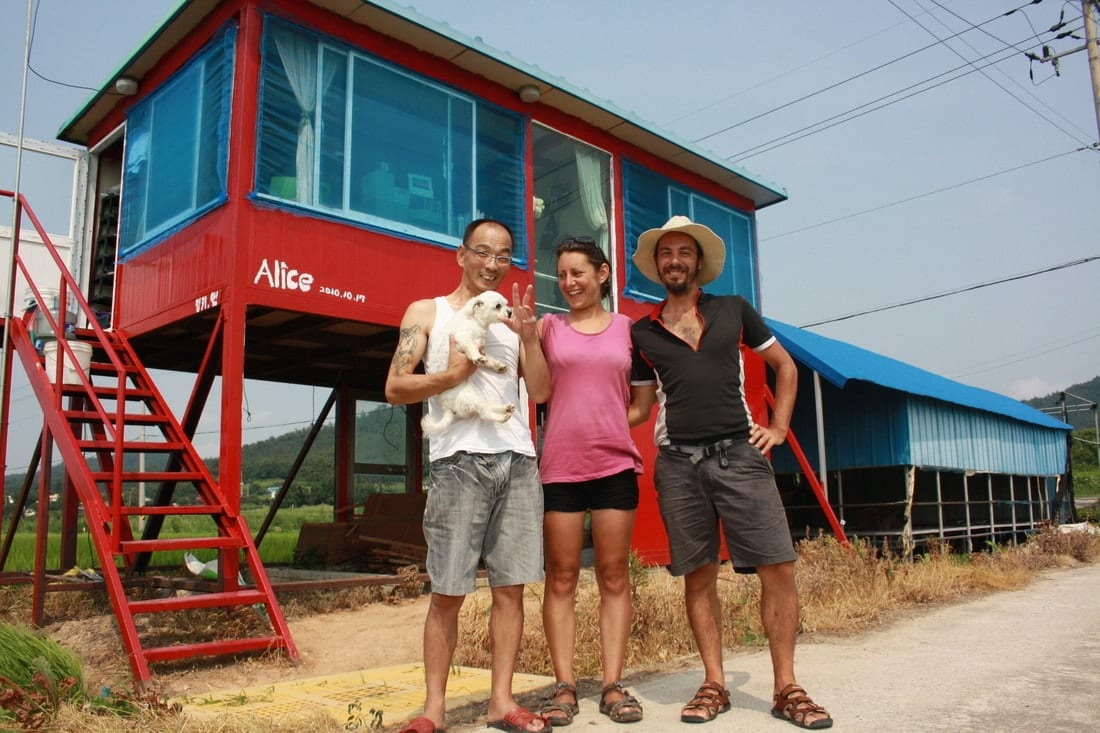
After a few weeks of cycling along the western coast of South Korea, we found ourselves heading into the Jeollanam region, beyond the Byonsan Peninsula. As we pedaled through vast rice paddies, the choice of which route to take was not entirely clear. As fate would have it, a friendly local family pulled up beside us and offered us ice cream, a gesture that turned into an invitation to join them for a meal.
The man, a clothing store owner from Seoul, was building a house in the countryside as a tribute to his recently deceased dog, Alice. As we sat in his makeshift “Alice Town,” we were treated to noodles, kimchi, beer, and soju. After the meal, the man gave me a bracelet as a gift, which I still wear today—just another example of the warm hospitality that’s so common in rural Korea.
After parting ways with our new friend, we continued our journey, and at a small, unmarked port, we found a ferry waiting to depart. Without any real destination in mind, we decided to hop on.
Arrival at Sangnagwol-ri: A Tiny Rock in the Ocean
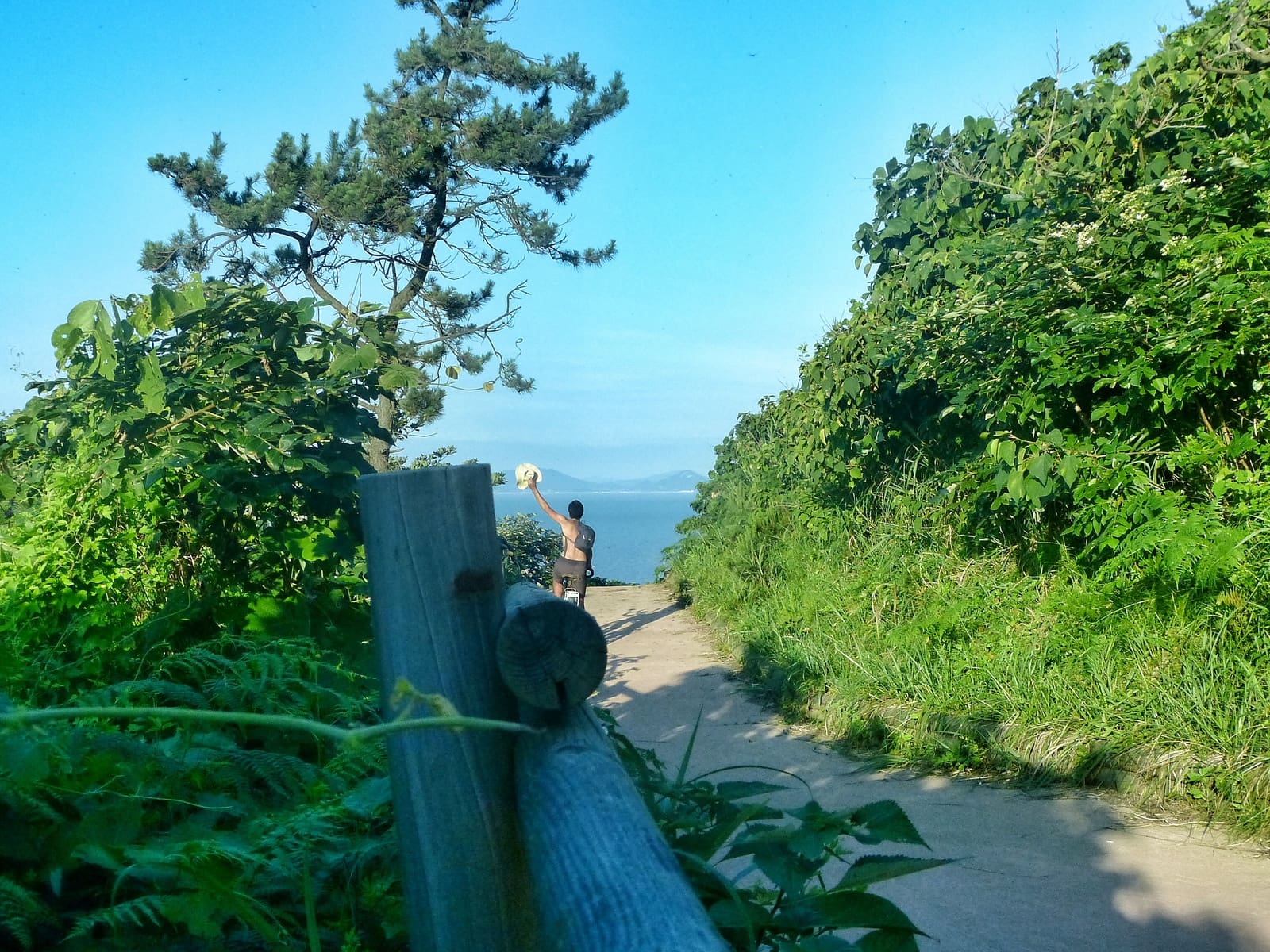
The ferry was a small, unassuming Ro-Ro (car ferry) that seemed to be going on a short, local route. For just a few dollars, we boarded and found a cozy spot in the common room, where I took a nap, while Daniele entertained a young girl who was making funny faces at him.
An hour later, we arrived at an island that, according to our GPS (OpenStreetMap), didn’t even have a name. It looked more like a rock in the ocean than a proper island. This was Sangnagwol-ri, a place so small that its existence was practically a secret. As we disembarked, we were greeted with amazed stares—clearly, we were the first foreigners these people had seen in a long time.
We bought instant noodles from the island’s only shop, which doubled as the lady’s living room, and discovered that the little girl from the ferry was her granddaughter. In this tight-knit community, everyone knew each other, and we were already beginning to feel like part of the family.
Hanagwol-ri: a tiny paradise
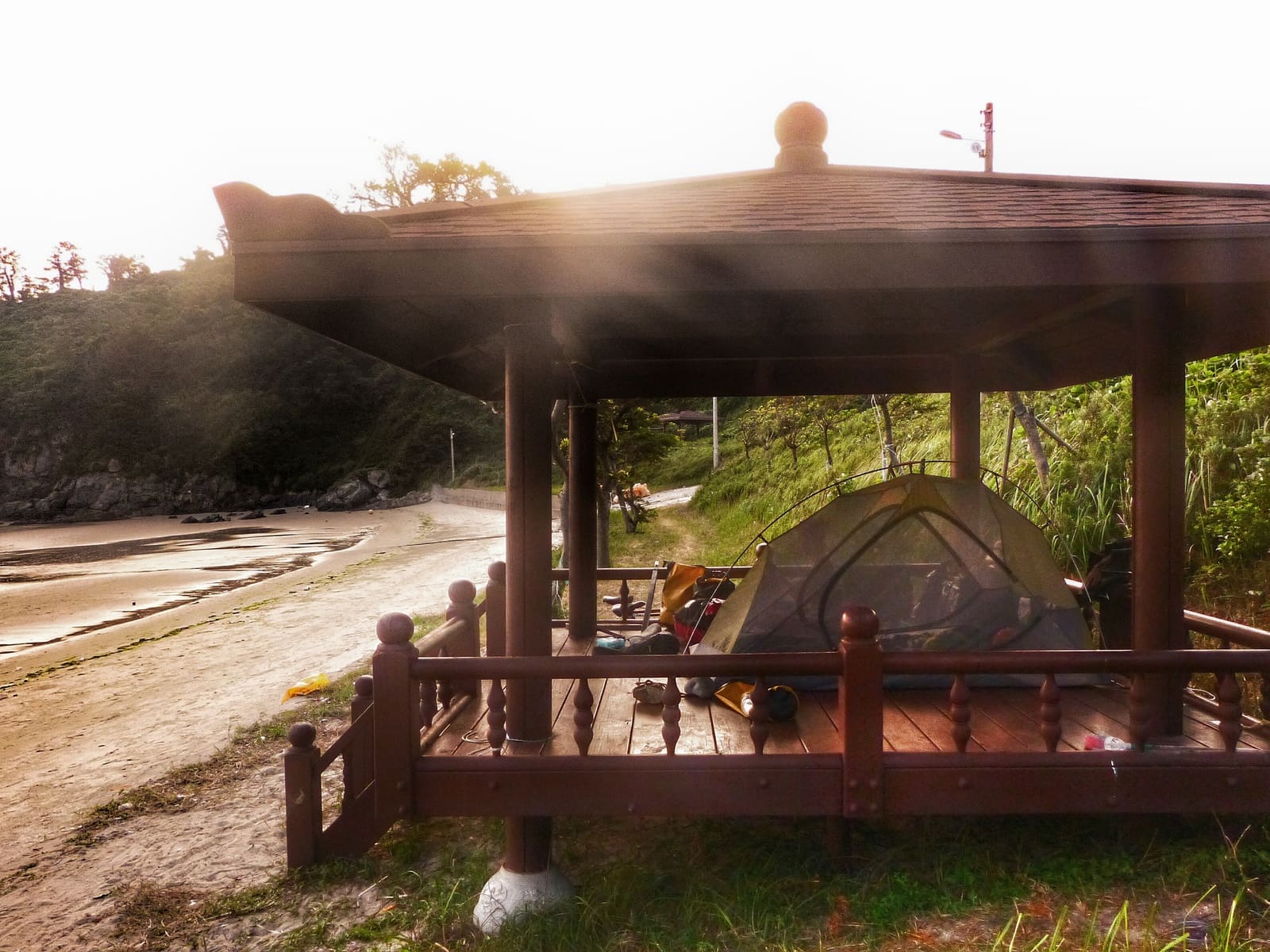
From Sangnagwol-ri, we set off on the island’s only road, Do Nakwol, and quickly noticed the abundance of gazebos dotted along the route. Finding a place to camp wouldn’t be a problem here. The faces of the islanders were unlike any we’d seen before—there’s something unique about the people of small islands.
A short ride later, we crossed a causeway linking Sangnagwol-ri to the neighboring island of Hanagwol-ri. We followed the road to the end and found ourselves in a small square, where a group of friendly locals gathered in a gazebo. A man, whom we assumed was the mayor, pointed us toward the perfect camping spot.
We had yet to see any beaches, but as we followed his directions to the other side of the island, we stumbled upon the most stunning sandy bay. There, we found a lovely gazebo with bathrooms, showers, and the entire beach all to ourselves.
This was the edge of the world—an untouched paradise.
A Day in Paradise: Beaches, Mud Baths, and Whales


The next morning, we woke up in what felt like heaven. The water was a little murky, as is common along this part of Korea’s coast, but it didn’t matter. Daniele took a mud bath, which, he insisted, was far superior to the touristy mud baths at the Mud Festival. We found colorful golf balls on the beach and decided to play boules as the sun rose.
At lunchtime, we returned to the square where we’d camped, and our new friend, the chubby man with the bulbous nose, invited us to eat. He asked the market lady to cook for us, and soon enough, a steaming bowl of spicy instant noodles arrived, served with a savory onion broth. This felt like a real meal—simple, yet delicious.
But that was just the beginning. As we ate, a few fishermen from the village joined us, asking if we were Indonesian (a question we’d heard before in Korea—apparently, we didn’t look very “European” to them). Alongside the noodles, we were treated to dried baby shrimp and a plate of dried whale meat. Daniele tried the whale and described it as “fatty,” while the fishermen praised it as a delicacy.
After a few more beers, we were invited to join them in the harbor, where they showed us the pools where they dry jellyfish. It was an authentic, local experience—one that few tourists ever get to witness.
Exploring the Other Side of Sangnagwol-ri

After spending a few hours with the fishermen, we returned to the gazebo to find that everyone had left. We decided to take a bike ride around the island, which was small but full of breathtaking views. From the other side of the island, we discovered another beach with a small campground. While it wasn’t as secluded as ours, it was still beautiful and peaceful.
We spent the rest of the afternoon cycling around the island, stopping at the outdoor street gym to get some exercise (a common feature in even the most remote corners of Korea). By sunset, we were back at our campsite, playing boules with the golf balls we’d collected earlier.
It was the perfect end to another unforgettable day on Hanagwol-ri and Sangnagwol-ri, two islands that felt like a hidden slice of paradise untouched by time.
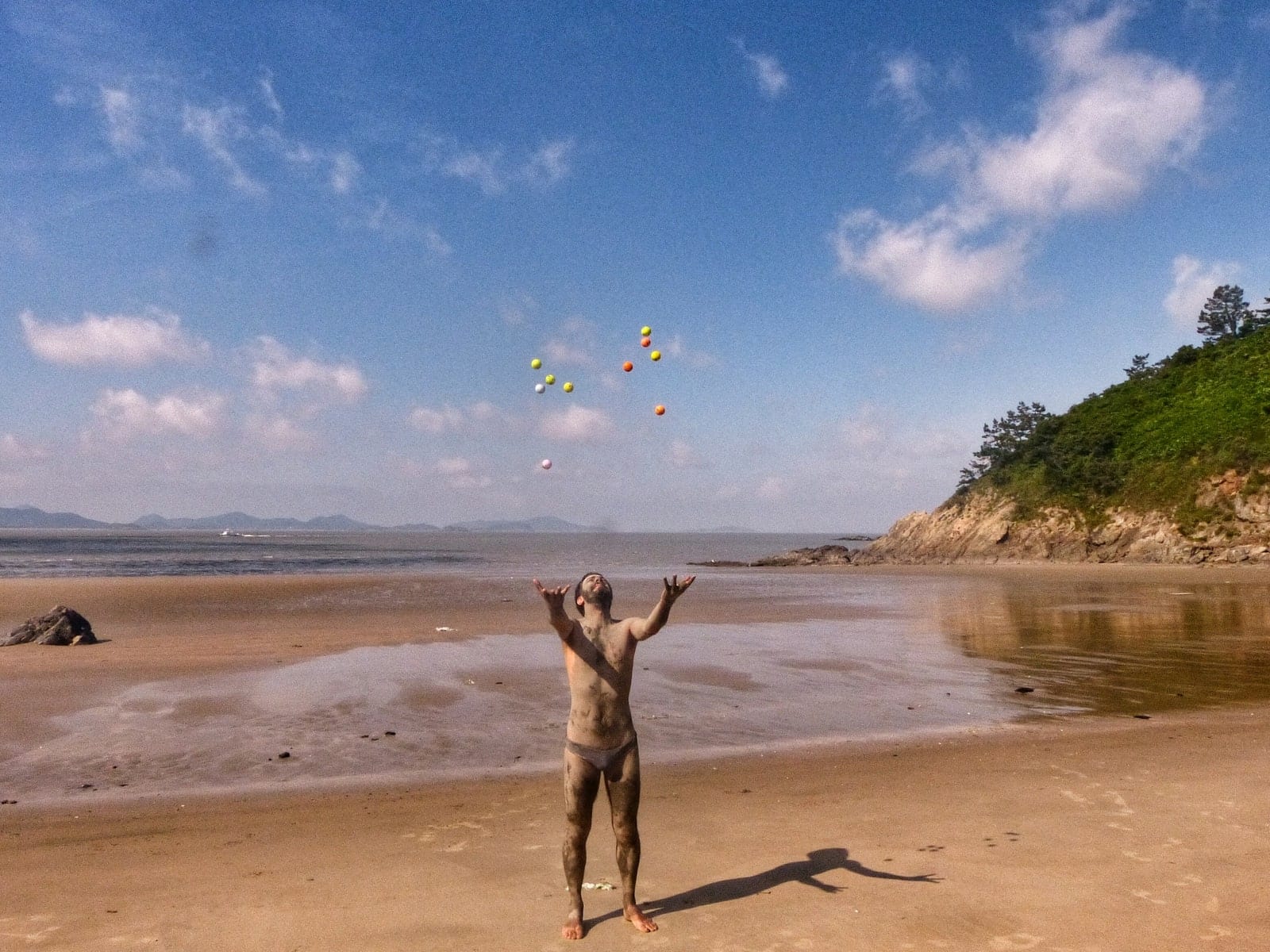
Road map: how to get to Hanagwol-ri and Sangnagwol-ri
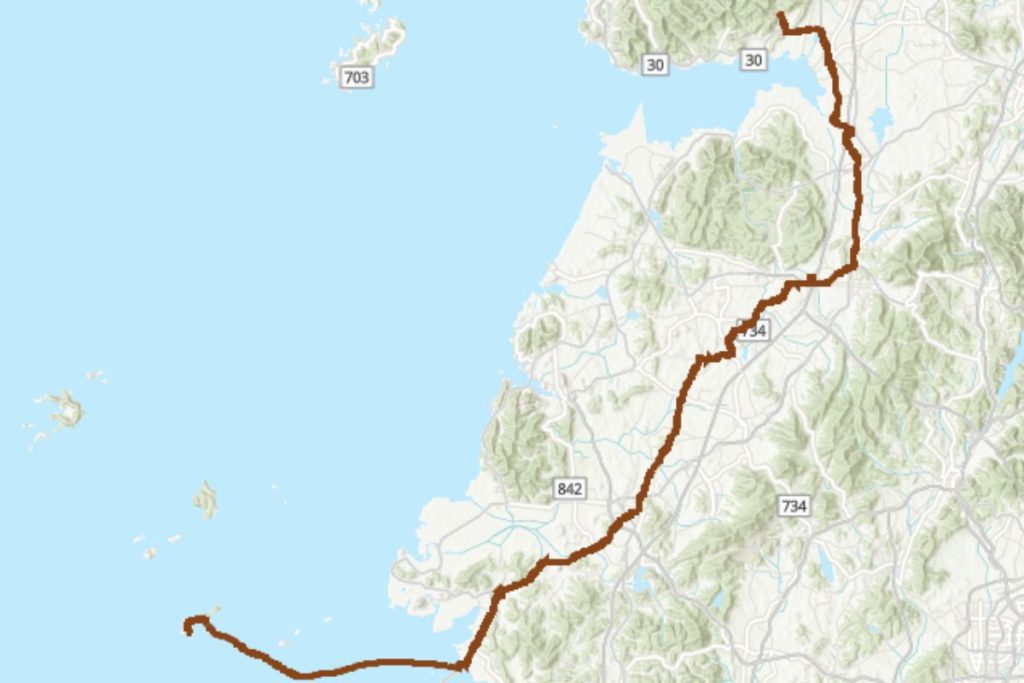
How to Get There: A Quick Guide
Getting to these islands is a bit of a mystery—no detailed tourist maps or websites can guide you. But that’s part of the charm! Here’s a rough idea of how to get there:
- Start from the nearest major city (like Gwangju or Mokpo).
- Head to one of the small ports along the Jeollanam coast, preferably with a local ferry service.
- Look for the small ferries (Ro-Ro boats) going to Sangnagwol-ri or Hanagwol-ri.
- Be prepared for no signs, no schedules, and plenty of serendipity.
Once you arrive, just follow the small roads around the islands. Locals will be more than happy to point you in the right direction—whether it’s to the best camping spot or the freshest seafood.
Final Thoughts: A Journey to Remember
Sangnagwol-ri and Hanagwol-ri might not be on the typical tourist trail, but that’s exactly why they became our favorite stops in South Korea. These islands offered us the kind of experience that’s increasingly rare in today’s world of mass tourism: unspoiled beauty, authentic encounters, and a sense of pure adventure.
If you’re looking to step off the beaten path and experience the real, quiet side of South Korea, these islands should definitely be on your list. You won’t find them in the guidebooks—but that’s the beauty of it.
So, are you ready for a ferry ride to the edge of the world?
More articles about South Korea


